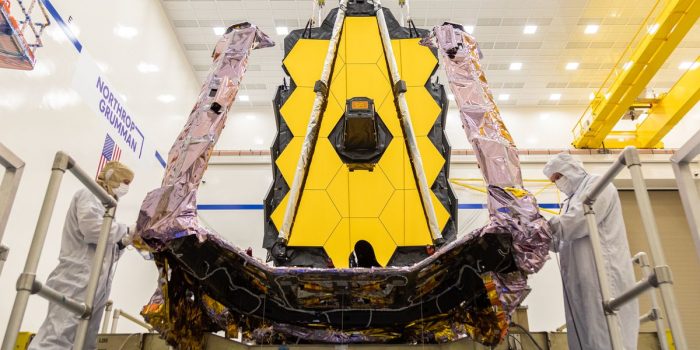The $10 billion James Webb telescope, the most ambitious and expensive robot probe ever built, has been launched into space atop a massive European rocket.
Engineers confirmed on Saturday that the observatory, which has been beset by decades of delays and massive cost overruns, was in perfect working order after undergoing the most closely watched lift-off in the history of unmanned space travel.
According to The Guardian, The telescope, which scientists have dubbed a “time machine,” will allow astronomers to examine the early universe immediately after the big bang, 13.8 billion years ago, as well as search for hints of life-supporting planets in our own galaxy.
Webb will not only inform us about unseen parts of space, but it will also be able to establish whether or not we correctly chronicled the events that occurred shortly after the Big Bang.
According to ground control, liftoff occurred at 4:20 a.m. PT (or 9:20 a.m. local time in French Guiana). The team repeatedly emphasized the spacecraft’s “nominal” trajectory and performance, easing concerns that had been building in the minutes leading up to the launch from the European Space Agency’s South American outpost.
JWST is tasked with gathering infrared light from some of the Universe’s most distant stars and galaxies, and it has the largest mirror of any space-bound observatory ever deployed. The telescope will be able to look back in time with this capability, photographing some of the first objects that formed just after the Big Bang. It will also shed light on supermassive black holes, distant alien worlds, star explosions, dark matter, and other mysteries.
The light-collecting mirror on the telescope is more than 21 feet (6.5 metres) wide. Hubble’s mirror, by comparison, is slightly under 8 feet (2.4 metres) broad and has been responsible for imaging some of the most famous objects in the Universe. JWST will be 10 to 100 times more sensitive than Hubble due to its bigger mirror, allowing it to see dim objects in the sky.
Inverse wrote that it’s all connected. The technical specs and features of the tools are still being worked out, in part because they are based on the scientific topics that astronomers hope to address in the next 20 years.
It’s not a single device, but a collection of instruments designed to assist scientists to answer the most important question they believe they can ask in the next two or three decades.


